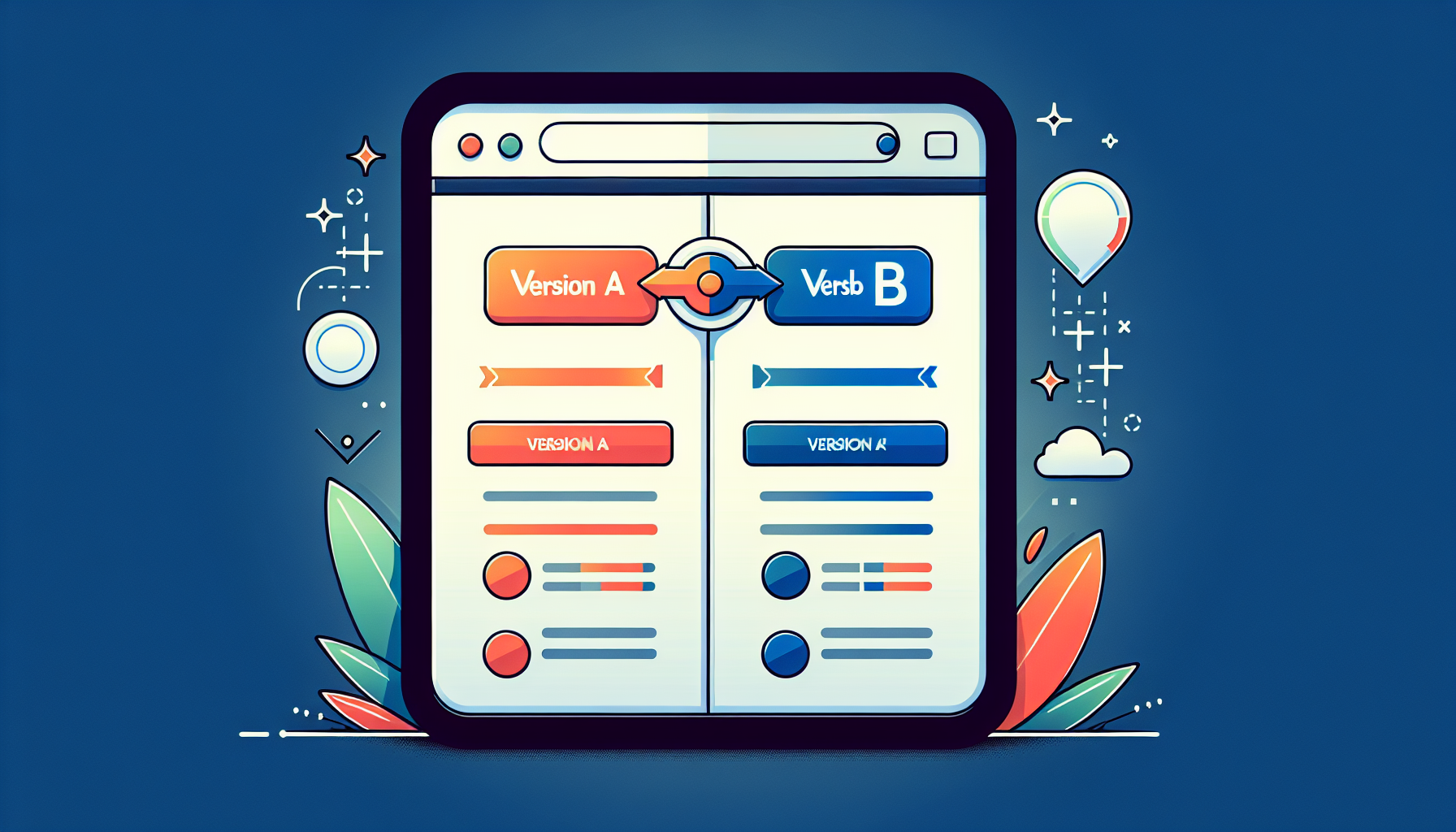A/B testing can feel pretty daunting, especially when you’re just trying to nail down the best marketing strategy for your course. You might be wondering, “How do I decide what to test or if it’s even worth it?” You’re definitely not alone in feeling overwhelmed by the choices.
But hang tight! If you stick with me, I’ll guide you through some straightforward A/B testing strategies that can be a game changer for your course marketing campaigns. By the end of this, you’ll not only understand what to test but also how to make sense of your results and drive better decisions.
From setting clear goals to analyzing case studies of successful campaigns, we’ll cover all the essentials you need to know. Let’s dive in and make your marketing shine!
Key Takeaways
- Establish clear goals for your A/B tests to maintain focus and measure success.
- Identify specific elements to test, such as call-to-action buttons or subject lines, and test one variable at a time.
- Create a measurable hypothesis predicting the outcome of your changes for easier analysis.
- Run tests for sufficient time, ensuring equal traffic to variations for reliable results.
- Use statistical significance and qualitative feedback to understand and analyze your results effectively.
- Check common scenarios for A/B testing, including subject lines, landing pages, and pricing strategies.
- Learn from successful case studies to inform your own strategies in course marketing.
- Continuously implement findings and adapt strategies based on ongoing results for better outcomes.

A/B Testing Strategies for Course Marketing Campaigns
1. Set Clear Goals for Your A/B Tests
Before diving into A/B testing, it’s crucial to establish what you want to achieve with your tests.
Clear goals could be increasing conversion rates, boosting email open rates, or improving engagement metrics.
For instance, if your current conversion rate is 10% and you aim to hit 20%, set that as your test goal. This gives you a benchmark.
Breaking down larger goals into smaller, measurable objectives can also help maintain focus.
Remember to keep your goals realistic; aiming to double your revenue in your first A/B test might be a bit ambitious.
2. Choose What to Test in Your Campaigns
The next step is identifying the specific elements you want to A/B test.
This could be anything from call-to-action buttons, email subject lines, landing page layouts, or even the color of your graphics.
For example, testing different subject lines, like “Cyber Monday Deals” versus “Holiday Specials,” can significantly affect your open rates.
Focus on one factor at a time for more reliable results, and ensure your tests are grounded in what your audience cares about.
Once you see what works best, don’t forget to scale those good choices into your broader strategy.
3. Develop a Testable Hypothesis
After you’ve chosen what to test, form a hypothesis that is precise and measurable.
Your hypothesis should predict the outcome of your changes based on previous data or insights.
An example might be: “Changing button color from blue to green will increase the click-through rate by 5%.”
A clear hypothesis makes it easier to analyze results later on, as you can directly compare the outcomes to your original expectations.
Plus, don’t forget to celebrate when your hypothesis hits the mark—or learn from it if it doesn’t! Each test is a step towards better understanding your audience.

4. Execute Your A/B Test Effectively
Executing your A/B test is where the excitement builds. You’ll need a plan in place to ensure all variables are controlled.
Use a reliable testing tool to create variations of your campaign, allowing you to monitor performance accurately.
Make sure to run your tests long enough to gather sufficient data. A common rule of thumb is to aim for at least a week, as it helps capture variations in user behavior.
During the testing period, keep an eye on external factors that could skew results, like holidays or major events.
Finally, ensure that you’re directing an equal amount of traffic to both versions, so your results are dependable.
5. Follow Best Practices for Running A/B Tests
Sticking to best practices can make or break your A/B testing efforts. Always test one variable at a time.
This helps isolate the impact of that particular change on user behavior.
Use a proper sample size to ensure statistical significance in your data. According to [3], an insufficient sample size can lead to misleading conclusions.
Also, document your tests and results. This not only helps in tracking performance but also in refining future tests.
Lastly, consider running A/B tests on different audience segments for a more nuanced understanding of how diverse groups respond.
6. Analyze and Understand Your Results
Analyzing your results is where the real learning happens. Start by comparing the performance of the variations against your hypotheses.
Look for statistical significance to confirm that your findings aren’t just a fluke. Tools like Google Analytics can help in this analysis.
It’s also essential to consider both qualitative and quantitative data for a holistic view. Understanding user feedback can provide valuable context behind the numbers.
For example, if your test shows a significant increase in click-through rates, check if this aligns with positive user comments or feedback.
Ultimately, use your findings to refine your marketing strategy and experiment process. Each test is a building block for more informed decisions down the road.
7. Identify Common A/B Testing Scenarios for Course Marketing
A/B testing in course marketing can target various scenarios. One common area is subject line testing in email campaigns.
Changing phrases like “Cyber Monday Deals” versus “Exclusive Discounts” can lead to varying open rates, showcasing the power of words.
Another popular scenario is landing page optimization. You can experiment with different headlines, images, and button colors to find what resonates best.
Don’t forget your calls to action; small changes here can dramatically improve your click-through rates.
Lastly, try testing different pricing strategies. This could uncover the price point that maximizes your return on investment, which is crucial in the competitive landscape of educational products.
8. Review Case Studies and Examples of Success
Case studies offer real-life insights into successful A/B testing strategies. One example is Groove, which changed its signup button color and size, leading to a 400% increase in conversions.
Another standout is Crazy Egg, which revamped its homepage layout. This simple change increased their conversion rate from 3% to 5%, showcasing the value of incremental improvements.
These examples demonstrate the potential impact of A/B testing across various contexts, including course marketing.
By closely analyzing what worked for these companies, you can adapt their strategies to fit your unique audience and offerings.
Incorporate takeaways from these success stories into your own campaigns for an edge in the market.
9. Implement Findings and Continuously Improve
After gathering actionable insights, the next step is to implement your findings. A/B testing is not a one-and-done deal; it’s a continuous cycle.
Start by prioritizing the changes that have the most significant potential impact on your goals—those stats are your guide.
Incorporate successful strategies into your existing marketing efforts and keep testing new ideas.
Join online communities or follow industry leaders to keep up with emerging trends and techniques in A/B testing.
Lastly, track the progress of changes over time to ensure that they continue to meet your objectives and adjust as needed.
With a commitment to constant improvement, your A/B testing efforts can lead to increased engagement and better overall course marketing performance.
FAQs
Key elements include defining specific metrics (e.g., conversion rates, engagement), setting realistic expectations, and ensuring alignment with overall marketing objectives to measure the effectiveness of your campaigns accurately.
Consider aspects that impact user experience and conversion rates, such as headlines, call-to-action buttons, images, and landing page layouts. Prioritize elements that have the potential to drive substantial results.
Use statistical analysis tools to compare test variations against control groups. Look for significant differences in metrics, and ensure results are valid by considering sample size and testing duration before making decisions.
Common scenarios include testing different pricing options, promotional email subject lines, course content formats, and landing page designs to determine which variations yield higher enrollment rates or engagement levels.
